Polar Bears are magnificent creatures that rule the tundra, and they are famous for their ability to be depicted in cute pictures and funny cartoons.
However, aside from their ability to pose for caricaturists and wildlife photographers, they are truly amazing creatures with fascinating habits.
If you are in need of more pictures of the polar bear than you find here, take a look at this page with lots of very special photos of the polar bear.
I hope you will find all the information and all the pictures you are looking for on these pages about this quite special animal.
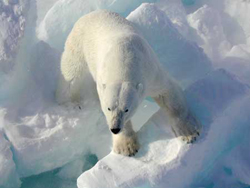
Polar Bear Habitat Facts
Polar bears only live in the areas of the world that are very cold, particularly in the Arctic region.
Polar bears need a very cold climate to live in, and their bodies are not able to handle warmer weather. Their bodies are made to live in the very cold regions of the world.
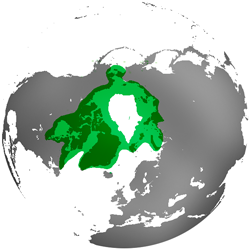
The habitats where polar bears live in zoos have very controlled climates to mimic the temperatures in the very cold parts of the world, as polar bears tend to overheat.
They have fur that is waterproof, and the oily sheen covering their fur allows them to shake water off easily.
They love to swim, and they spend as much or more time swimming and enjoying the cold water of their Arctic regions than they do walking around on land. Their paws are covered with a rough surface that allows them to walk on ice without slipping, and their main prey is found in the cold water of the Arctic.
They live in Canada, the Greenland, and the Soviet Union, as these are the coldest parts of the earth.
Polar Bear Habitat Facts
There have been sightings of polar bears in locations nearer to human civilization in recent years, particularly in Canada.
Polar bears tend to roam over wide expanses of territory, and many researchers and animal experts believe that polar bears have a wider range than any other carnivore on Earth. This is believed to be due to the fact that their primary food sources are often hard to find, as the Arctic Circle is not densely populated by animals.
Polar bears must, therefore, roam wild in order to find sufficient food to maintain their thick layer of blubber and stay healthy.
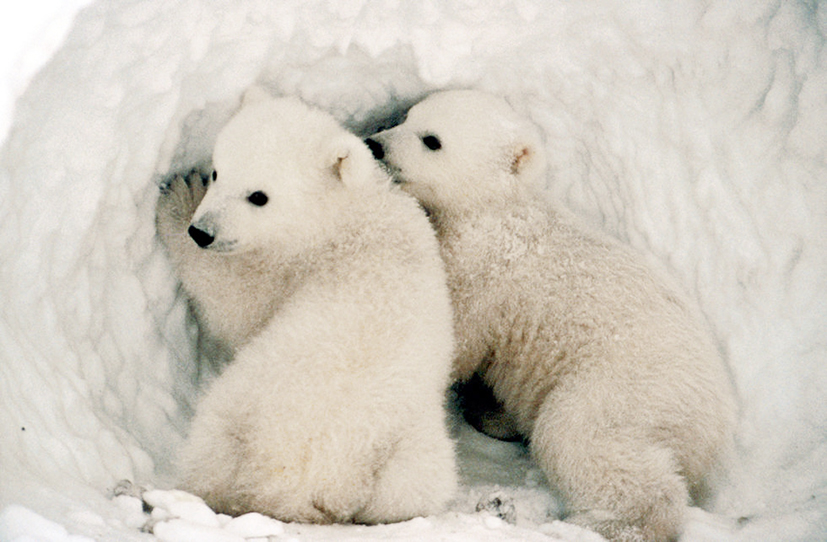
Females are incredibly selective when it comes to choosing the perfect habitat for raising their young.
Females will make a den where they can give birth to and raise their young, and they will not move if they find that there is plenty of food in the region.
If a female cannot find a suitable habitat with enough food to feed her baby, she will often end up giving birth before the baby is ready. There is the risk that the baby will be born weak, or that the polar bear mother will end up losing her baby before it is born.
What do Polar Bears Eat?
The primary food source of polar bears is seals, and there are a number of seals that live near the polar bears’ primary hunting grounds.
The types of seals most commonly hunted by polar bears are Bearded and Ringed Seals, as they are the easiest seals to hunt. Thanks to the fact that polar bears spend their time on land and in the water, they are incredibly adept at hunting the marine mammals. They are able to swim very fast, up to 10 kilometers per hour (6 mph).
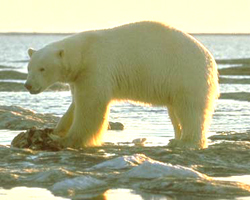
Polar bears need to eat a lot of food in order to maintain a healthy weight, as they need to keep their body packed with a thick layer of blubber that protects them from the cold.
Bears that live in captivity often are smaller than wild polar bears, and this has nothing to do with their diet. The reason that captive polar bears weigh less is due to the fact that they don’t need to maintain such a thick layer of blubber, and thus their body doesn’t store as much fat as it does when the bears are in the wild.
A Fierce Hunter
Most polar bears will do all their hunting in or near the water, and it is uncommon for them to hunt on land. They will usually be able to find food easily, as there is often an abundance of seals in the Arctic Circle.
However, there comes a time when the seals begin to leave the region to hunt for food, and this is when polar bears have to work extra hard to catch the seals.
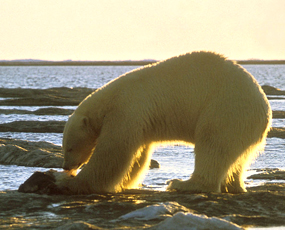
Polar bears are surprisingly patient hunters for being such large animals, and they will wait until the seals come up to the surface for air.
They wait on the ice until the seals come up to breathe, and they slam their powerful claws down on the head of the seal. They also use their massive jaws to snap shut on the seal, which breaks pretty much everything.
The polar bear is incredibly powerful, and it is able to crush the head of a seal with a swipe of its paws. Not only does the bear have massive muscles, but the weight of its body added to the blow makes it strong enough to kill with a single swipe.
Polar bears start to change their eating habits as they age. When polar bears are younger, they will usually only eat the meat of the animals that they kill. All of the protein in the red meat helps them to develop and grow into massive creatures. However, once they begin to mature, they will eat the skin and the blubber as well.
Most mothers training their bear cubs to hunt will eat the skin and blubber, leaving only the red meat for the babies.
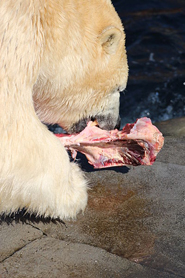
These beautiful creatures are not only partial to seals, though they are the top choice if they are presented with a menu. Polar bears will often catch old walruses if they can’t find seals, and they have even been known to hunt whales.
They can eat rotting food without getting food poisoning.
Polar bears will occasionally try to catch land animals like hares and Arctic fox, though the polar bear is fairly slow and lumbering when on land.
Actually they will eat almost anything that has to do with meat. They will try to hunt the weakest and most injured animals in order to find easy food.
However, they don’t have to constantly be eating, as their body is able to handle months on end with no food at all. This is due to the fact that seals are usually harder to catch during the winter months when the ice is thick, and thus their bodies have adapted to be able to survive by consuming the thick layers of blubber covering the polar bears.
Breeding of the Bear
Researchers have a lot yet to learn about polar bear breeding and mating, but they have determined that males will usually start trying to woo the females around April or May of each year.
Once the bears have checked their calendar to be sure it is spring time, they will usually start fighting each other for the rights to mate with a certain female. The male polar bear will select his mate and fight off all the competition. Some male polar bears have traveled 100 miles just to be able to mate with a female whose scent they have picked up.
The male polar bear fights can be quite intense, and polar bears will usually end up with broken teeth, torn skin, scars, and everything but black eyes. The older males are usually a lot more adept at fighting, so they will usually trounce the younger male polar bears and win the right to mate with the females.
The funny thing is that most polar bears are solitary creatures, and they will usually range on their own until the time comes to mate. However, as soon as mating season arrives, the males will instantly gravitate towards the females and fight off all of the males that would try to take their place.
Despite the male’s best efforts to keep his gal for himself, many female polar bears will mate with more than one male bear. Litters of cubs can be born either from one mate or from many. The mating process will last up to a week, which ensures that the female can have enough mating time to guarantee conception.
A female polar bear can gain between 180 and 230 kilos (400 to 500 pounds) when she is pregnant, and they will spend their pregnancy months building their den where the babies will be born.
The den is usually built with a number of rooms, and the mother will hibernate in the den until the time to give birth arrives. The mother’s heart rate drops while she hibernates, but her body temperature remains steady during hibernation.
Polar Bear Cubs Facts
he babies are usually born in late fall or winter, between November and February.
The babies will often weight less than a kilo (2.2 pounds), though some babies have been known to weigh 0.4 kilos (1 pound) at birth. The average litter contains two cubs, and they will feed off their mother’s milk.
The milk is rich in fat, and the mother’s body will consume her fat stores in order to nourish the babies. The babies will grow until they weigh 15 kilos (34 pounds) or more, after which they will emerge from the den and go out into the wild.
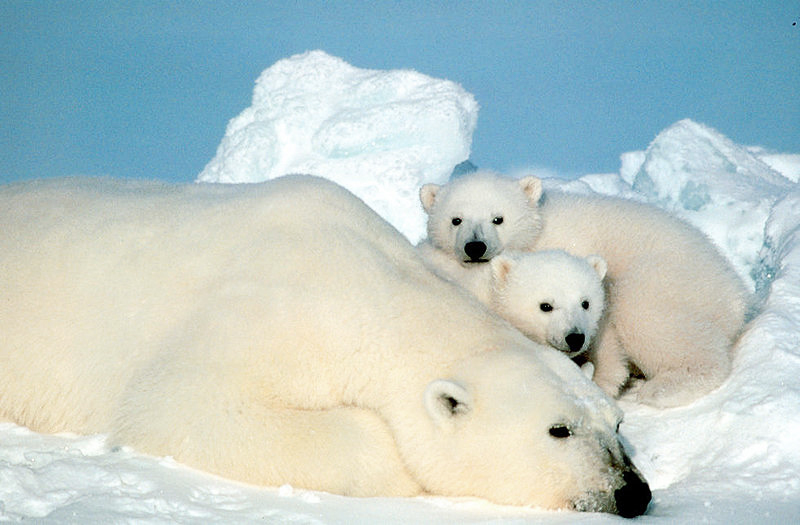
Facts About Polar Bear Anatomy
The male polar bear can weigh as much as 680 kilos (1,500 pounds), though the average female polar bear will only weigh around 360 kilos (800 pounds).
Male polar bears will grow as long as 3.3 meters (10 feet) long, while females will usually grow to be about 2.4 meters (8 feet) long. Their bodies are very different than their fellow bears, as their claws enable them to walk on ice as well as hunt their prey.
The polar bear’s body is much longer than other bears, and they have a longer stride than any other bear.
Their skull is very long, and it ends in a long nose as well.
Their legs are stocky and short, but incredibly powerful and able to propel the bear through the water at amazing speeds.
Their feet are quite large, which helps to distribute their weight more evenly when they are walking on ice. The large feet also work like flippers that help them to swim much more quickly.
The bottom of their feet have rough pads on them that provide them extra purchase when walking on ice, and their short claws are incredibly useful for digging into and scooping out ice.
Their mouth is full of 42 teeth that are razor sharp, and their jaws are powerful enough to bite the head off a seal.
The teeth of a polar bear are longer than those of a brown bear.
Their fur appears to be white, though the hairs are hollow to make them more waterproof. The fur begins to appear yellow as the bears age, but the blubber that is beneath the fur is the secret to their warmth.
Polar bears have an amazing sense of smell, and they are believed to be able to detect scents as far away as 1.6 kilometers (1 mile).
Their vision and hearing are both excellent, and they are some of the fiercest hunters in nature thanks to their amazing senses.
Polar Bear Information about Communication
Polar bears are usually fairly quiet creatures, but you will hear them loud and clear when they are irritated.
They usually bellow at other males during mating season in an attempt to frighten them off.
They will also make noises if they feel threatened, such as chopping their teeth, hissing, and growling. Their communication with the females is much gentler, and the females will respond to the males in their own language.
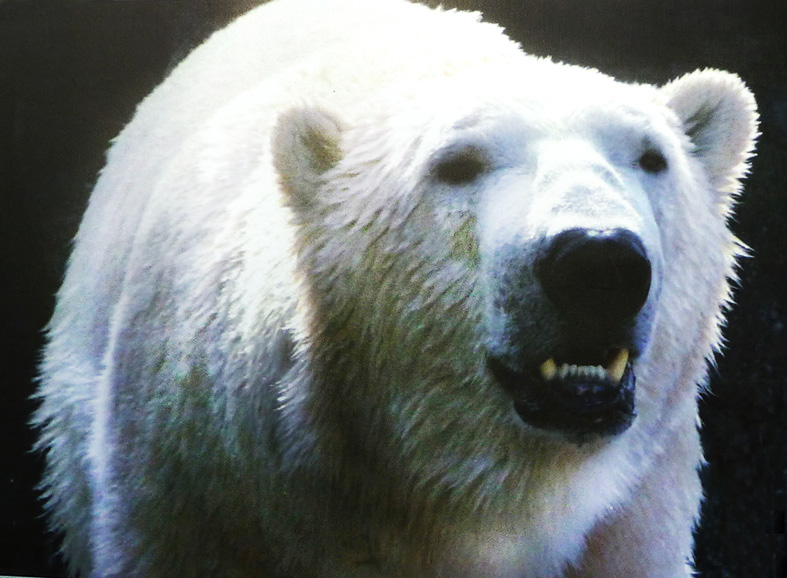
Females often communicate verbally with their young, and cubs learn to recognize the sound of their mother’s voice.
Communication between polar bears is mainly non-verbal, however, and most will communicate using the other senses rather than their voice.
Social Lives of Polar Bears
While polar bears will not get on Facebook or check their emails for the latest news feeds, they still have a very interactive social life that is still being studied.
They are not territorial creatures, and they will usually run from a problem rather than face it.
Most polar bears will avoid others, though they will often interact well with fellow polar bears. Most polar bears will just act indifferent if they come in contact with other polar bears, and they will simply “hang out” around each other without having too much interaction.
The main time that the polar bears will interact is during the mating season, as the males and females will be canoodling while the other males will be fighting each other.
Despite the fact that most bears are indifferent to each other, there is some evidence to suggest that polar bears are fairly companionable creatures and often crave the presence of other bears.
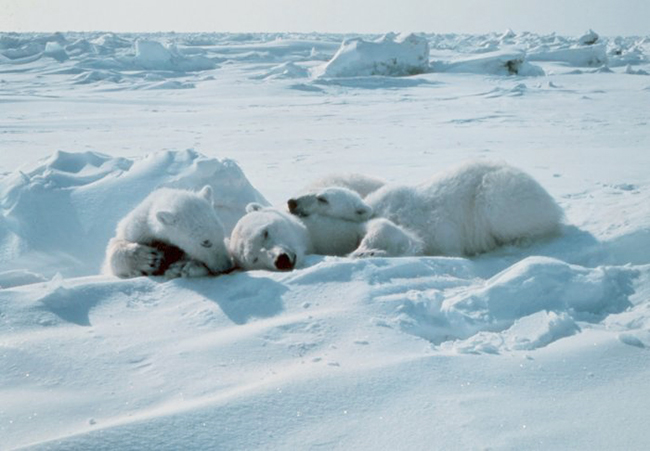
Some polar bears will act indifferent, while other bears will play with their fellows. The reactions of polar bears to contact with another will be different every time they meet.
The one exception to the indifference of polar bears to each other is between certain male polar bears. Male polar bears will occasionally form strong bonds with another bear, and they will show signs of friendship if they even run into each other out on the range. The friendship between bears lasts a long time, regardless of the frequency of the contact they have.
Polar bear cubs are playful and friendly, and they start wrestling with each nearly from the moment they are born. Male cubs wrestle and fight in order to obtain the skills needed to dominate the other males when they grow. The females will wrestle in order to gain strength as they grow, and these skills will help them to defend their young offspring from danger.
Who Hunts the Hunter?
There are very few animals who hunt polar bears, and the majority of the polar bear deaths are caused by humans hunting them.
Many polar bears are hunted by humans for sport or for meat. Some walruses have been known to attack polar bears, and orcas have also been seen killing the bears, though both are highly uncommon.
However, environmental concerns like global warming are the most threatening for polar bears, as they are unable to survive in warmer climates.
Are Polar Bears Endangered?
Polar bears are currently on the list of endangered animals, but hunting is not the main cause of their being endangered.
The primary concern for polar bears is the melting of the icecaps and global warming, as well as the damage that humans do to the environment.
As mankind continues to damage the earth more and more, polar bears are finding that they have less and less clean, pristine, solitary wilderness to roam in.
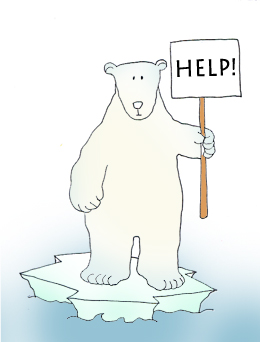
There are some conservation efforts ongoing around the world, but the world needs to pick up its pace if they are serious about protecting the endangered polar bears.
The melting of the ice caps means that there are fewer ice floes for polar bears to inhabit, as they swim from ice floe to ice floe. Despite their ability to swim long distances, they still need land to make their homes, and the melting ice caps are the main cause of their being endangered.
Another cause is the polar bears being in the top of the food chain, and therefore being poisoned by the high levels of persistent organic pollutants.
It might not kill them now, but might influence their reproduction and their immune system.
You can find mode funny or cute polar bear clipart here.
Polar Bear Fun Facts:
• Polar bears are incredibly well bundled with their fur and blubber, and they lose almost no body heat in the cold winter weather. A polar bear can have as much as 12 centimeters (4.5 inches) of blubber on its body, which will effectively keep out the winter chill.
• Adult males will actually overheat when they run, as their fur holds the heat in close to their body incredibly effectively.
• Polar bears are actually hot more often than they are cold.
• A polar bar is strong enough to kill an animal with a single blow of its large paws.
• Polar bears follow a fairly strict diet of seals, though they will add pretty much any meat to their diet.
• Even the bottom of the polar bear’s paw has fur.
• Polar bears cannot see or hear for an entire month after they are born.
• Polar bears have slightly webbed feet and water repellent fur.
• Polar bears have rough paws that prevent them from slipping as they walk on the ice.
• Most polar bear females will build their nests from old snow from the previous year instead of freshly fallen snow.
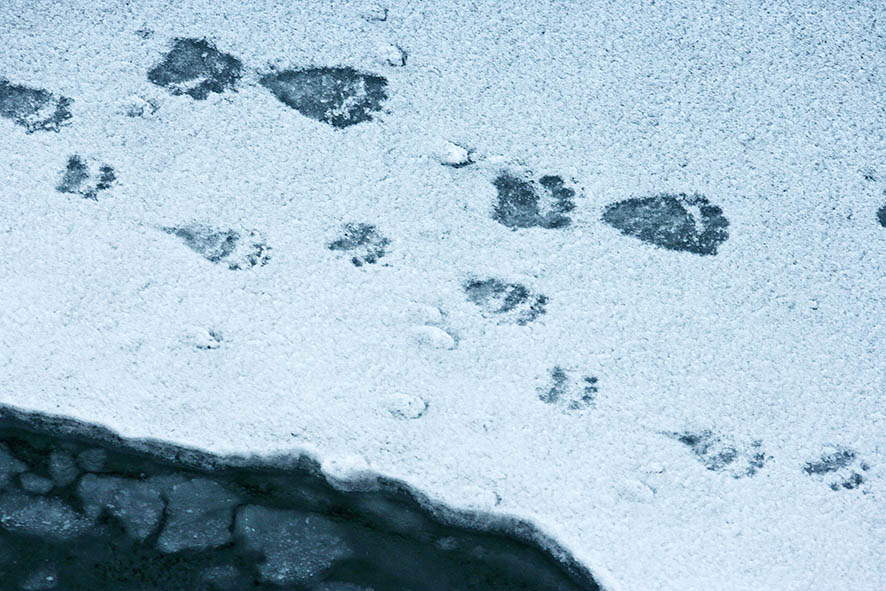
More Facts about the Polar Bear
• Polar bear babies weight roughly 0.4 kg (1 pound) when they are born, meaning they grow 500 or 600 times by the time they reach 227 to 272 kilograms (500 to 600 pounds) at adulthood.
• The fur on a polar bear isn’t white, but it is actually completely hollow. The hollow fur helps to trap heat near the body of the polar bear, and the sun’s light reflecting off the fur appears white to the human eye.
• Polar bears are frequent visitors to the Canadian city of Churchill in Manitoba.
• Polar bears can swim up to 161 kilometers (100 miles) at a time.
• Polar bears can swim as fast as 10 kilometers (6 miles) per hour.
• Polar bear mothers teach their children to stay perfectly still when they hunt, and a hard smack to the head is the mother’s way of showing the cub that they are moving.
• You can actually adopt polar bears through online websites.
• Polar bears spend more time on ice than they do on land, therefore they are considered a marine mammal.
• Polar bears will crawl on their bellies when walking over ice that is very thin and likely to break. Crawling helps to distribute the weight of the polar bear over as large a surface as possible, which will prevent their weight from breaking the ice.
• Polar bears don’t hibernate like regular bears, but they will simply get out of the bad weather by staying in their den. Only pregnant polar bears will hibernate
• Polar bears will cover their noses with their paws in order to conserve heat.